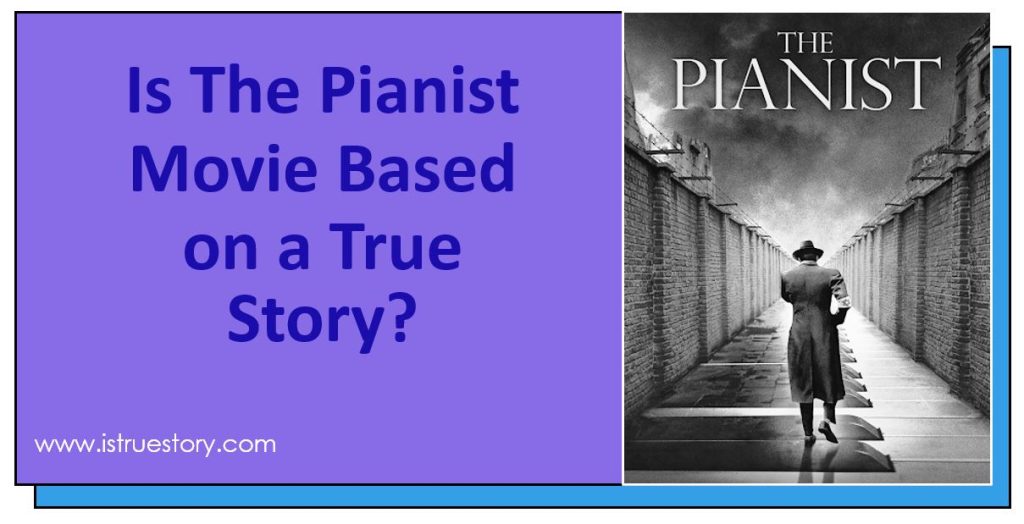
Is The Pianist Movie Based on a True Story?
Yes, “The Pianist” is indeed based on a true story. This compelling film is a cinematic adaptation of the autobiographical book “The Pianist” by Władysław Szpilman. Szpilman was a gifted Polish-Jewish pianist who survived the Holocaust, enduring the unthinkable horrors of World War II and the destruction of Warsaw. Directed by Roman Polanski, the movie provides a visceral and haunting look at the survival and resilience of one man against the backdrop of war-torn Europe.
What Happened to the Boy Under the Wall in The Pianist?
One of the most heart-wrenching scenes in “The Pianist” involves a young boy trying to squeeze through a gap in the Warsaw Ghetto wall, only to be caught and beaten by Nazi soldiers. This scene powerfully captures the brutal realities faced by the Jews during the Holocaust, emphasizing the constant danger and inhumanity that pervaded every aspect of their lives.
The Pianist: What Happened to His Family?
Tragically, Władysław Szpilman’s family did not survive the Holocaust. Early in the film, we see Szpilman separated from his family during their deportation to the Treblinka extermination camp. This separation marks a pivotal and devastating moment in both the film and Szpilman’s life, highlighting the cruel fates that awaited many during this dark time.
Did Any of Władysław Szpilman’s Family Survive?
No, Szpilman was the sole survivor of his family. His parents and siblings were all murdered in the Holocaust. The film poignantly depicts Szpilman’s solitary survival amidst the ruins of Warsaw, a city once vibrant with the lives of those he loved.
What Is a Pianist Called?
A pianist is simply called a pianist. This term refers to someone who plays the piano, either professionally or as a hobby. In the context of “The Pianist,” Władysław Szpilman uses his extraordinary talent to express his emotions and retain a semblance of humanity during times of unimaginable distress.
How Many Oscars Did The Pianist Win?
“The Pianist” won three Academy Awards: Best Director for Roman Polanski, Best Actor for Adrien Brody, and Best Adapted Screenplay. The film’s profound impact and critical acclaim underscore its quality and the deep emotional connection it forged with audiences worldwide.
What Does a Pianist Do?
A pianist performs music using the piano. Beyond mere performance, a pianist can convey deep emotional undertones and connect with audiences through the power of music. For Władysław Szpilman, playing the piano was not just a profession but a lifeline during the darkest times.
Is The Pianist a Good Movie?
Absolutely, “The Pianist” is an excellent movie. It not only delivers a powerful narrative about survival and loss but also serves as a stark reminder of the atrocities of the Holocaust. Adrien Brody’s haunting portrayal of Szpilman, combined with Polanski’s direction, creates a film that is both educative and emotionally resonant.
Production Details and Reception of The Pianist
Filming for “The Pianist” began in February 2001, with locations in Germany and Warsaw meticulously chosen to recreate the war-torn environment of the 1940s. The set design meticulously brought the devastated Warsaw to life, adding authenticity to the historical portrayal. Premiering at the Cannes Film Festival in 2002, the film was awarded the prestigious Palme d’Or and has since been recognized for its artistic and historical significance.
The Music of The Pianist
The score of “The Pianist,” featuring compositions by Chopin and other classical composers, was masterfully performed by Polish pianist Janusz Olejniczak. The music is not just a background element but a pivotal part of the film, reflecting Szpilman’s internal world and the broader cultural heritage of the Jewish community during the war.
For more details on true stories behind movies, visit Istruestory, where the lines between reality and cinema blend and where every fact is meticulously verified.
In conclusion, “The Pianist” is a testament to the human spirit’s endurance in the face of overwhelming adversity. It reminds us of the power of art to sustain hope and the importance of remembering history’s darker chapters to ensure they are never repeated






